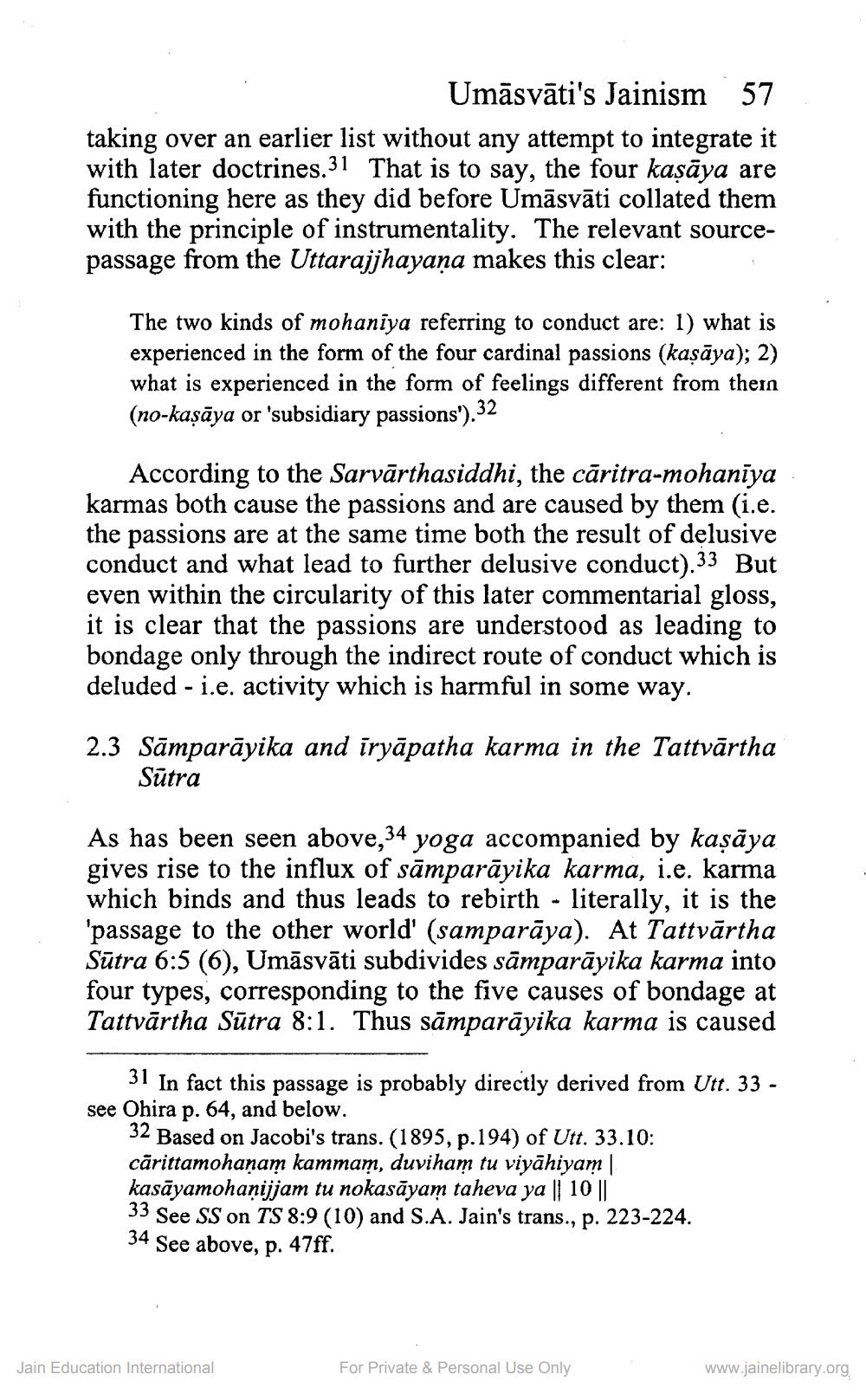________________
Umāsvāti's Jainism 57 taking over an earlier list without any attempt to integrate it with later doctrines.31 That is to say, the four kaşāya are functioning here as they did before Umāsvāti collated them with the principle of instrumentality. The relevant sourcepassage from the Uttarajjhayana makes this clear:
The two kinds of mohaniya referring to conduct are: 1) what is experienced in the form of the four cardinal passions (kaşāya); 2) what is experienced in the form of feelings different from thein (no-kaṣāya or 'subsidiary passions'). 32
According to the Sarvārthasiddhi, the cāritra-mohanīya karmas both cause the passions and are caused by them (i.e. the passions are at the same time both the result of delusive conduct and what lead to further delusive conduct).33 But even within the circularity of this later commentarial gloss, it is clear that the passions are understood as leading to bondage only through the indirect route of conduct which is deluded - i.e. activity which is harmful in some way.
2.3 Sāmparāyika and iryāpatha karma in the Tattvārtha
Sutra
As has been seen above, 34 yoga accompanied by kaşāya gives rise to the influx of sāmparāyika karma, i.e. karma which binds and thus leads to rebirth - literally, it is the 'passage to the other world' (samparāya). At Tattvārtha Sūtra 6:5 (6), Umāsvāti subdivides sämparāyika karma into four types, corresponding to the five causes of bondage at Tattvārtha Sūtra 8:1. Thus sāmparāyika karma is caused
31 In fact this passage is probably directly derived from Utt. 33 - see Ohira p. 64, and below.
32 Based on Jacobi's trans. (1895, p.194) of Utt. 33.10: cărittamohanam kammam, duviham tu viyāhiyam | kasāyamohanijjam tu nokasāyam taheva ya || 10 || 33 See SS on TS 8:9 (10) and S.A. Jain's trans., p. 223-224. 34 See above, p. 47ff.
Jain Education International
For Private & Personal Use Only
www.jainelibrary.org,




